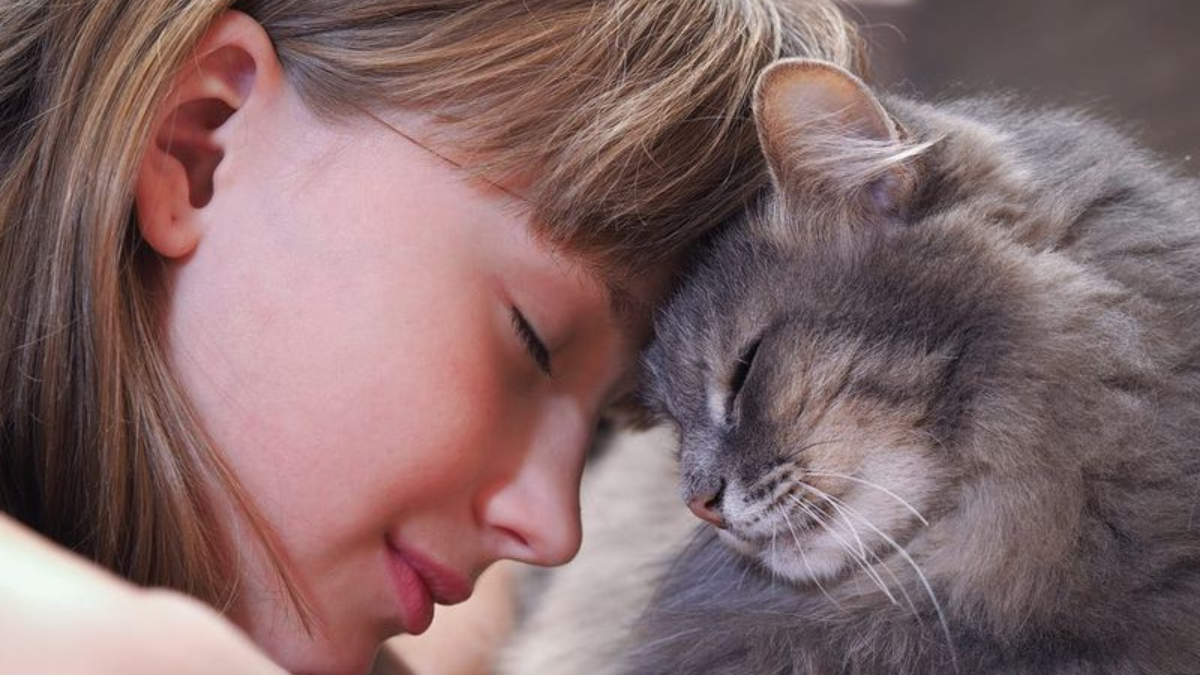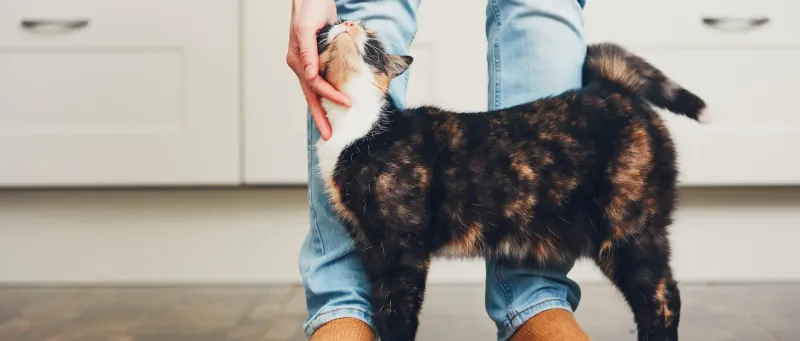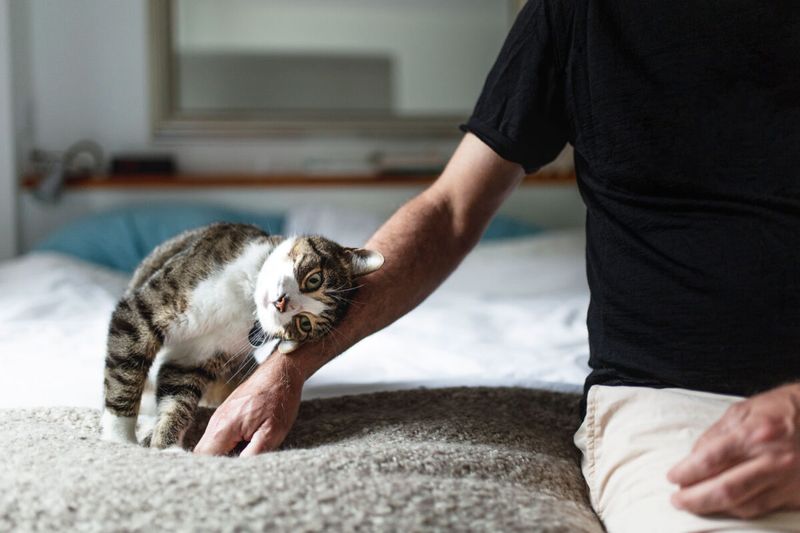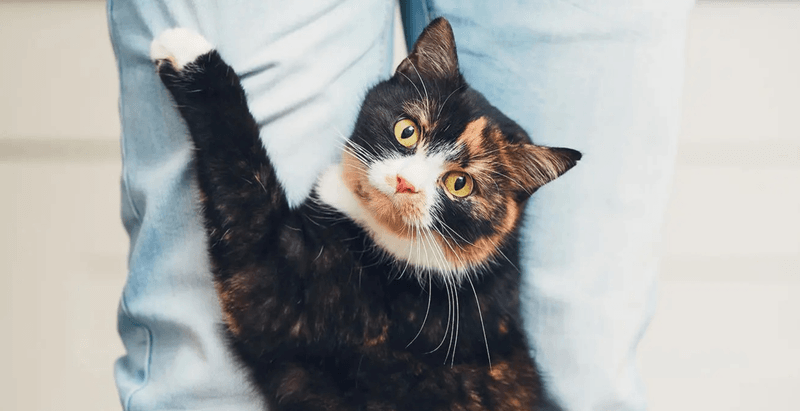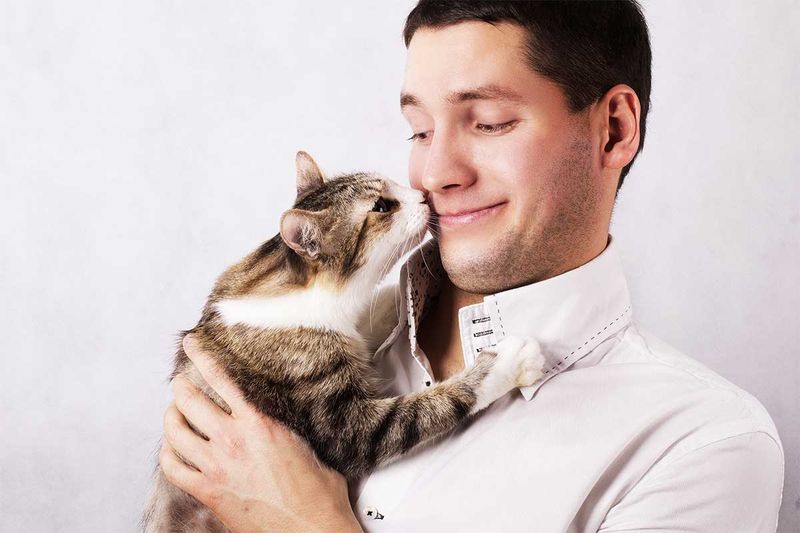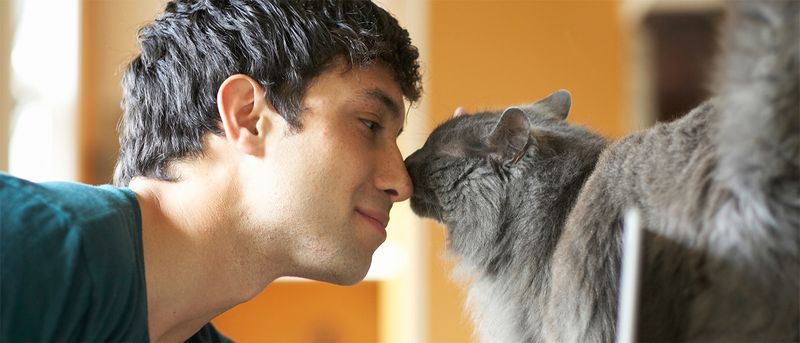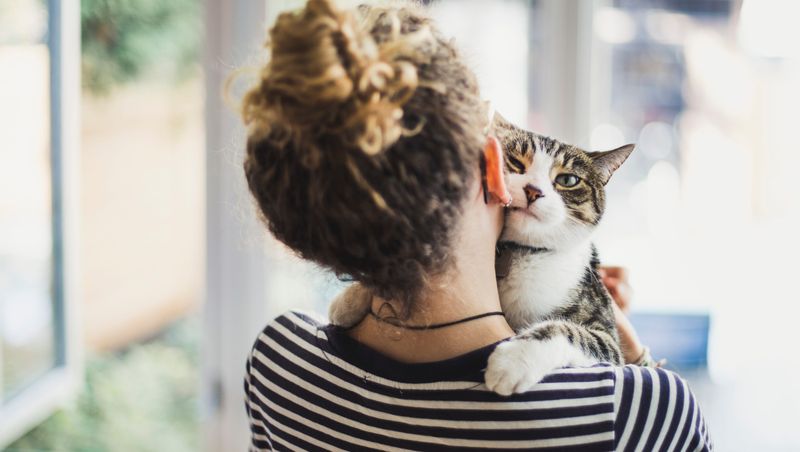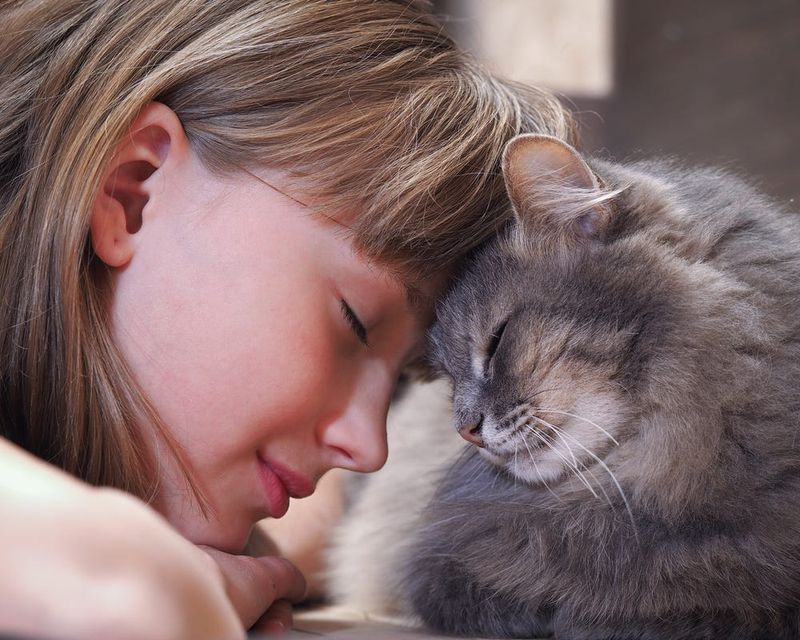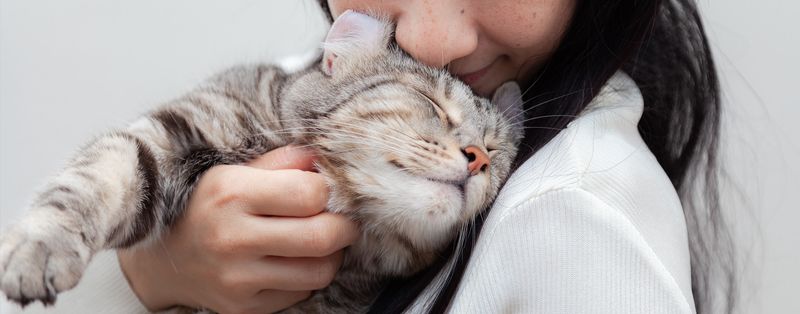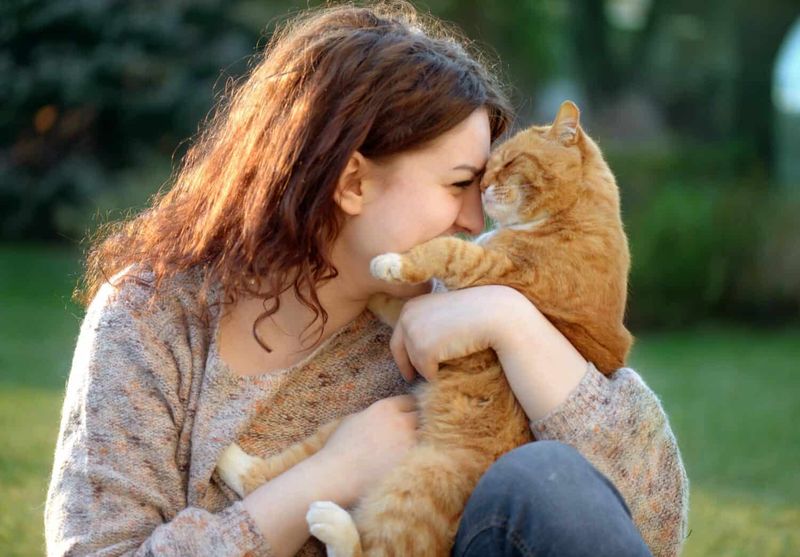📖 Table of Content:
If you’re a cat owner, you’ve likely experienced the delightful moment when your feline companion weaves around your legs or nuzzles up against you. While this behavior is undeniably adorable, it’s also deeply rooted in feline instincts and communication.
Cats aren’t just being affectionate when they rub against you—they’re sending messages, marking territory, or even trying to tell you something important.
With that in mind, let’s explore all the intriguing reasons why cats rub against you. Whether you’re a seasoned cat lover or new to the world of whiskered friends, these insights will help you better understand your furry companion’s unique behavior.
1. Marking Territory
Cats have scent glands located on various parts of their bodies, including the cheeks, paws, and base of the tail. When a cat rubs against you or an object, it’s likely marking territory. By leaving its scent behind, the cat establishes a sense of ownership and familiarity. This behavior is not only common in domestic cats but also observed in wild felines. It reassures the cat by creating a familiar environment.
Interestingly, when a cat rubs against a human, it might not just be marking territory but also expressing affection. The mingling of scents fosters a bond between the cat and its human companion. This behavior is an innate trait stemming from their wild ancestors.
2. Seeking Attention
Cats often use physical contact to capture attention, especially when they desire interaction. Rubbing against you might be the cat’s way of saying it’s time for some attention or play. This behavior is particularly noticeable in social and outgoing cats that enjoy engaging with their human companions.
If your cat rubs against you and then looks up expectantly, it might be asking for pats, scratches, or even a treat. Understanding these subtle cues can improve the communication and bond between you and your feline friend.
This interaction often leads to a rewarding experience for both parties, providing the cat with the needed attention and the owner with delightful companionship. Recognizing and responding to these cues can create a nurturing and enjoyable environment for everyone involved.
3. Showing Affection
When a cat rubs against you, it might simply be showing affection, a behavior that reflects trust and comfort. This form of physical contact can be a way for cats to demonstrate their fondness. Many cats learn that rubbing results in positive reinforcement, like petting or verbal praise.
Cats often use this behavior with people they trust and feel safe around. It’s a mutual exchange of affection, creating a warm and caring bond. This behavior is often seen when returning home after being away, as the cat expresses its joy at the reunion.
Embracing these moments strengthens the relationship, reinforcing the cat’s place as a beloved family member. Being aware of these affectionate gestures can deepen the bond, creating a lasting companionship enriched by mutual understanding and love.
4. Greeting and Bonding
Rubbing is a common greeting behavior among cats, both with humans and other cats. When a cat rubs against you, it is akin to a handshake or a hug in human terms, symbolizing friendship and trust. This behavior is often accompanied by purring or meowing, further enhancing the affectionate greeting.
Cats may also rub against each other to mix their scents, which strengthens social bonds within their group. This communal scent mixing helps maintain harmony and understanding among cats.
Responding with gentle strokes or soft words can affirm the existing bond, fostering a welcoming and harmonious relationship. By appreciating these gestures, you can cultivate a mutually respectful and loving environment.
5. Spreading Pheromones
Cats release pheromones from specific glands located around their face, particularly when they rub their chin or cheeks against surfaces. These pheromones serve as chemical messages that convey information to other cats, playing a crucial role in feline communication.
By rubbing against you, a cat may be transferring these pheromones, marking you as part of its inner circle. This act signifies trust and acceptance, integrating you into their social network. It also provides comfort and reassurance to the cat, as the scent marks familiar territory.
Understanding this behavior can shed light on the intricate ways cats communicate and establish social hierarchies. It emphasizes the importance of scent in a cat’s world, highlighting the subtle yet profound messages that pheromones can convey within the feline community.
6. Temperature Regulation
Cats may rub against surfaces or individuals to help regulate their body temperature. This behavior is particularly common in cooler climates or during winter months. By pressing against warm objects or people, cats can absorb additional heat, ensuring their comfort and well-being.
This practical behavior showcases the cat’s adaptability and instinctive nature. It also highlights the importance of providing a warm and cozy environment for your feline friend, especially when temperatures drop.
By understanding this behavior, cat owners can take proactive steps to ensure their pets remain comfortable and happy, regardless of the weather. Offering warm bedding, cozy spaces, and plenty of warmth can enhance the cat’s quality of life, allowing it to thrive in various conditions.
7. Health and Stress Indication
Sometimes, excessive rubbing may indicate health issues or stress in cats. If a cat suddenly increases this behavior, it could be a sign of skin irritation, allergies, or an underlying medical condition. Observing these changes is crucial for identifying potential health concerns.
Stress or anxiety might also lead to increased rubbing as a self-soothing mechanism. Cats may seek reassurance through physical contact, using familiar scents to calm themselves.
Regular health check-ups and a comfortable living environment can mitigate such issues, ensuring your cat’s well-being. By paying attention to unusual behaviors, owners can provide timely intervention, enhancing the cat’s overall health and happiness.
8. Instinctual Behavior
Rubbing is an instinctual behavior deeply rooted in a cat’s wild ancestry. In nature, cats rub against trees, rocks, and other surfaces to leave their scent and communicate with fellow felines. This behavior is hardwired into their DNA, persisting in domestic cats today.
By rubbing against you, a cat is engaging in a natural behavior that feels satisfying and familiar. This instinctual action serves multiple purposes, from marking territory to expressing belonging.
Understanding this primal urge can provide insights into your cat’s natural tendencies and behaviors.
It enriches the human-cat relationship by highlighting the timeless connection between domesticated pets and their wild ancestors, celebrating the unique and enduring bond that cats share with their environment and companions.
9. Exploring New Environments
When introduced to new environments, cats may rub against objects or people to familiarize themselves with the surroundings. This behavior helps them gather information about the area, reducing anxiety and promoting a sense of security.
By spreading their scent in unfamiliar places, cats create a comforting and recognizable environment. This behavior is particularly noticeable when moving homes or traveling.
Cat owners can support this exploration by providing familiar items and scents, offering reassurance during transitions. Understanding and accommodating this behavior fosters a supportive environment, allowing cats to adapt smoothly to changes.
By recognizing this need for exploration, you can assist your feline friend in feeling secure and confident in any setting.
